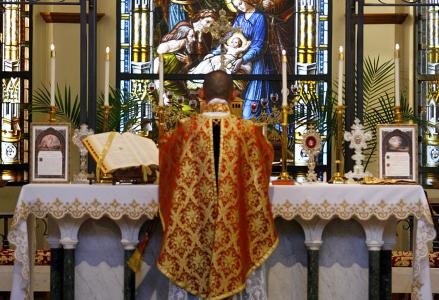Peadar Laighléis
As long as I can remember, attracting young people to the Church has been a hot topic. There have been many trials: folk Masses, youth festivals and Taizé evenings, for example. None have proved to be a magic bullet. I don’t believe there is a single answer to this problem, but we could begin by looking at what causes the young to stay away.
Those concerned with youth faith formation since the 1970s will tell you the present culture goes against religious practice. So it does, but what is to be done? The first hurdle is that the vast majority of Catholics under 50 have little more than a shallow knowledge of Catholicism.
As time goes on, younger Catholics are further removed from the religious society that sustained their elders. This deficit has been pointed out since the Second Vatican Council (1962-65), and it seems reality hasn’t sunk in. Those Catholics who have overcome what was lacking in school did so through much personal study and reflection, though this is rarely appreciated.
The traditional Latin Mass, known as the extraordinary form, is one outlet for the young thinking Catholic. I think the most striking difference seen in the extraordinary form Mass is that men attend in a higher proportion than normal and the second is the fact that that most attendees are too young to remember when the Latin Mass was the norm.
The traditional Latin Mass has won many converts to the Faith over centuries, but here and now reverent celebration and fellowship with like-minded worshippers are powerful draws (some young people attend Eastern Catholic liturgies for similar reasons). Nonetheless, if some young Catholics are going to the trouble to attend the Latin Mass, when most of their friends go nowhere at all, there is an energy there which could be harvested for the good.
Statistics
France is given as a country in which the extraordinary form of the Mass flourishes. This is true, but the cited statistics are not always borne out. I have heard time and time again that one third of all Catholics attending Mass in France went to the extraordinary form, later this became half and finally a majority of French practicing Catholics allegedly chose the extraordinary form. None of the sources quoting these figures were French and when I put this to French lay activists, they told me that these numbers were exaggerated.
When I read an article in a reputable Catholic journal asserting that a majority of French priests would be celebrating the extraordinary form exclusively in 20 years’ time, I resolved to check the data available. In 2016, 121 priests were ordained in France; 73 were diocesan and 48 were members of religious orders or institutes. Twenty four of the religious belonged to societies which typically celebrate the extraordinary form.
This two dozen includes seven Society of St Pius X priests, whose canonical status remains unresolved. The 24 make up 21% of priests ordained in France last year and this is an impressive figure as only 3% of French parishes offer the extraordinary form. But it is a long way from the conclusion projected above.
2015 saw 60 diocesan ordinations and 50 in religious institutes, and though there were 76 ordinations in the orders to 75 in the dioceses in 2014, it must be remembered that the congregations include established orders such as the Dominicans and Cistercians and newer groups such as the Emmanuel Community which draw their inspiration from the Charismatic Renewal movement.
One can make a case on the last point that the Charismatic experience in France is very different from that in Ireland. The same is true of the traditional movement.
As a rule, the celebration of the extraordinary form Mass in Ireland and the English-speaking world tends to be silent low Mass or choir-sung Mass. In French-, German- and Dutch-speaking countries, the low Mass tends to be a dialogue Mass and the sung Mass is sung by the congregation.
This betokens a more active engagement by the worshippers with the Mass than here. Commentators correctly cite Pope Benedict XVI’s advocacy of the extraordinary form Mass, but they should remember that he is doing so from the French and German experience of the extraordinary form rather than what has become the norm here since the extraordinary form was reinstated.
It should be said that France and Italy incorporate many Baroque-era frills in the extraordinary form which are traditionally missing here and in this respect, Ireland is more in line with ideas of the liturgical movement before Vatican II by leaving them out. Pope Benedict was seriously influenced by this movement, so it deserves closer study.
The extraordinary form Mass is a response to the worldwide crisis of decline in Catholic practice. It is not the only one – there are many more. Nor is it a unified answer in its own right.
Even if it is not growing as rapidly as some advocates claim, it is growing in strength among those who continue to practice Catholicism. It is secondary to the need for clarity of doctrine, but it is strongly supportive of that belief.
It is true that goodness will win more over than beauty or truth, but to advance the Church’s mission, truth and beauty need to be harnessed in the service of goodness to provide a wholly Catholic alternative to the world’s woes. This option must be based on love of both God and neighbour, as exclusion of either is not a Catholic option.
Peadar Laighléis is a past president of the Latin Mass Society of Ireland.



